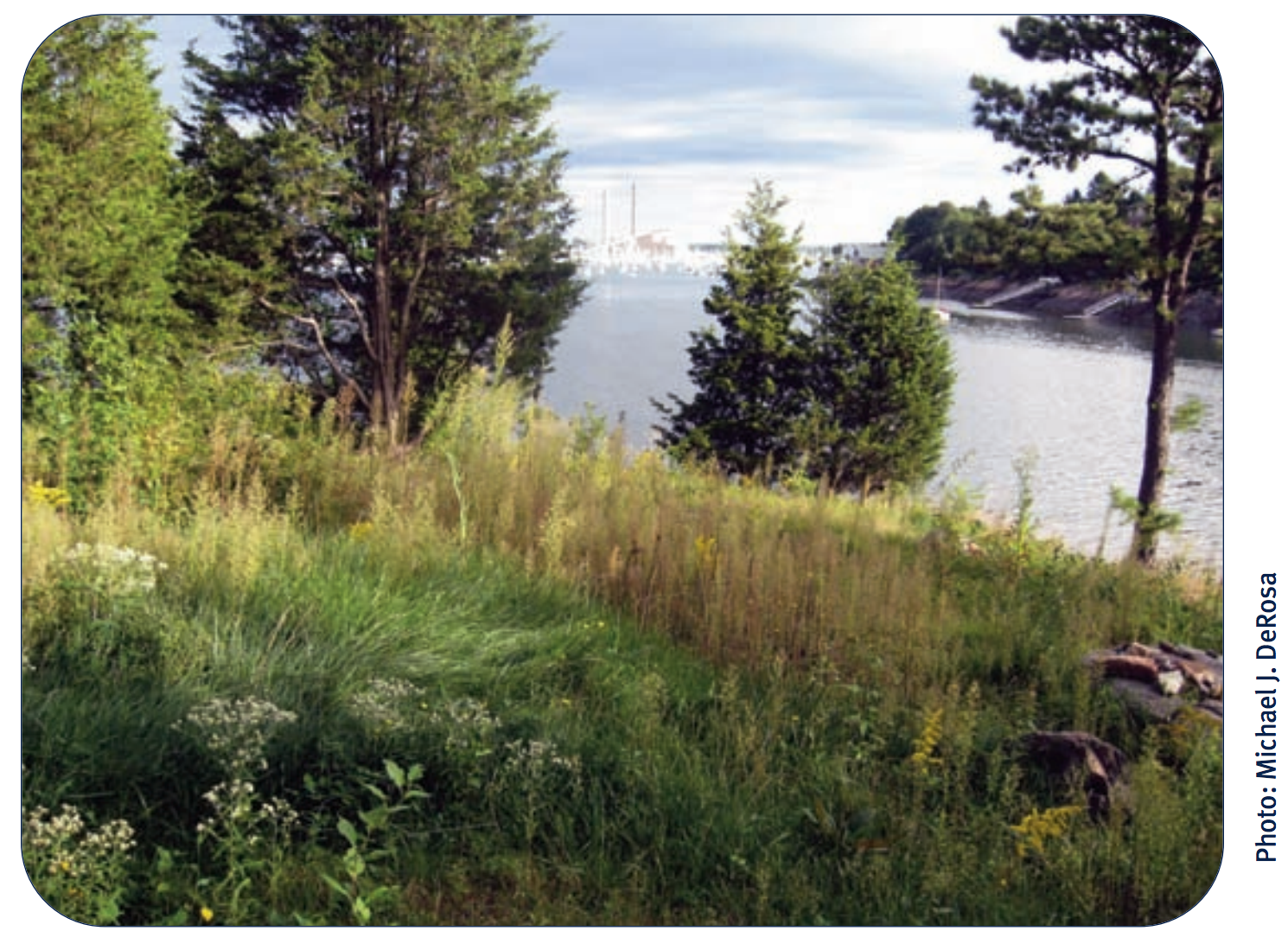Plant-Life and Water Retention
Landscape with Saltwater-Hardy Plants
What Is It?

Mass.gov
Not all plants can survive an encounter with saltwater. As sea levels rise, planting beds may become inundated with high-salinity water during flooding events, killing or damaging most land-based species. Coastal Massachusetts is home to many saltwater-hardy plant species, and many more imported plants can grow and flourish in this climate. Landscaping with saltwater-hardy plants can help to lessen the financial impacts of flooding, combat erosion, and beautify sites. Hardy and well-rooted vegetation can also mitigate the severity of storms and flooding (University of Cambridge).
Saltwater-hardy plants are species that can survive infrequent seawater inundation. They are often native to coastal areas and are frequently planted at beach properties where regular flooding is expected. These plants tend to require sandier soil to grow and monitoring the soil type and pH will help plants to thrive.
Garden supply companies sell saltwater-hardy trees, grasses, shrubs and seasonal plantings. Selecting saltwater-hardy plant species ensures that sea level rise has a minimum effect on landscaping. For larger landscaped properties, switching from less tolerant species could represent a noteworthy savings on repairs after a flood event.
Benefits
- A saline flood would do less damage to the landscape.
- Salt-tolerant plants are also safe from winter road salt runoff, which can otherwise “burn” plants.
- The planting beds can serve as bioretention pools for seawater flood events.
- Plants contribute to beautifying the urban landscape.
- Plantings can help stabilize dunes and decrease erosion.
- Planting a greater abundance of plants, especially native species, helps raise local biodiversity and ecosystem health, and removes carbon from the atmosphere.
- Native plants also are more cost-effective and require less maintenance.
Drawbacks
- Sandier soil retains less water for faster infiltration.
NEWS
- “Plants Also Suffer From Stress,” Phys.org, September 2015
- “Weathering the Storm,” New York Times, March 2013
RESOURCES
- Gardening Know How: Plants For Gardening With Salt Water Soil
- Miyamoto et al. 2014: Landscape Plant Lists for Salt Tolerance Assessment
- gov: Coastal Landscaping in Massachusetts - Plant Highlights and Images
PROJECT EXAMPLES
- At 6 New Street, Boston, MA, which is targeted for LEED Gold certification, resiliency measures included various floodproofing designs as well as salt-hardy and native plant landscaping.
- Downbeach Demonstration Garden, Margate, NJ, demonstrated native shore plants’ beauty and resilience.
A SAMPLE OF PROVIDERS
- Plant Delights Nursery: Salt Tolerant Seaside Plants
- Landscape designers/contractors (e.g.Klopfer Martin Design Group, A Yard & A Half Landscaping), greenhouses, nurseries, garden supply stores


